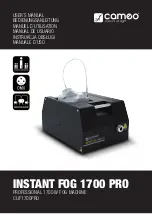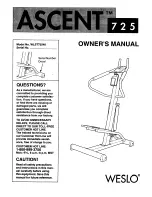
17
Stabilizers
To create the best quality embroidery, it is important to
use stabilizers.
How to use:
Attach the stabilizer to the wrong side of the fabric.
You may need to use more than one layer.
For firm fabrics, you may place a thin sheet of paper
under the fabric.
The non-adhesive type should be used when
embroidering fabric which cannot be ironed or for
sections which are difficult to iron.
Cut the stabilizer larger than the embroidery hoop and
set it on the hoop so that the entire piece is fastened to
the hoop to prevent any looseness in the fabric.
Attaching the stabilizer
Place the wrong side of fabric and the glossy side of
the stabilizer together. Fold up a corner of the stabilizer
and fuse it with an iron.
NOTE:
Fold up a corner of the stabilizer, to make it easier
to peel off the excess stabilizer after stitching.
Ironing temperatures vary depending on the kind of
adhesive stabilizer you are using.
Types of the stabilizers
NOTE:
Sticky type stabilizers can be used only for securing a small piece of fabric or work that cannot be secured in the
hoop, or for securing velvet and other napped fabric that would be permanently marked by the hoop.
Clean the bobbin holder after stitching as glue can get stuck on it.
Type
Usage
Property
Tear-away
Stable woven fabrics
Made from a fiber that will tear easily.
Iron-on
Knits and all kinds of unstable fabrics
Adhesive type fusible with an iron.
Cut-away
Knits and all kinds of unstable fabrics
Non-woven fabric that does not tear.
Water soluble
Cutwork or lace embroidery
Right side of looped fabrics such as towels to avoid loops
coming through the embroidery
A thin film that will dissolve in water.
Heat-away
Cutwork or lace embroidery
A thin film that will melt away with
heat.
Содержание Memory Craft 400E
Страница 1: ...Instruction Book...
Страница 2: ......
Страница 66: ...64 Oil the X carriage Oil the arrow point felt inside of the carriage slit...
Страница 68: ...864 800 505 ENG...
















































